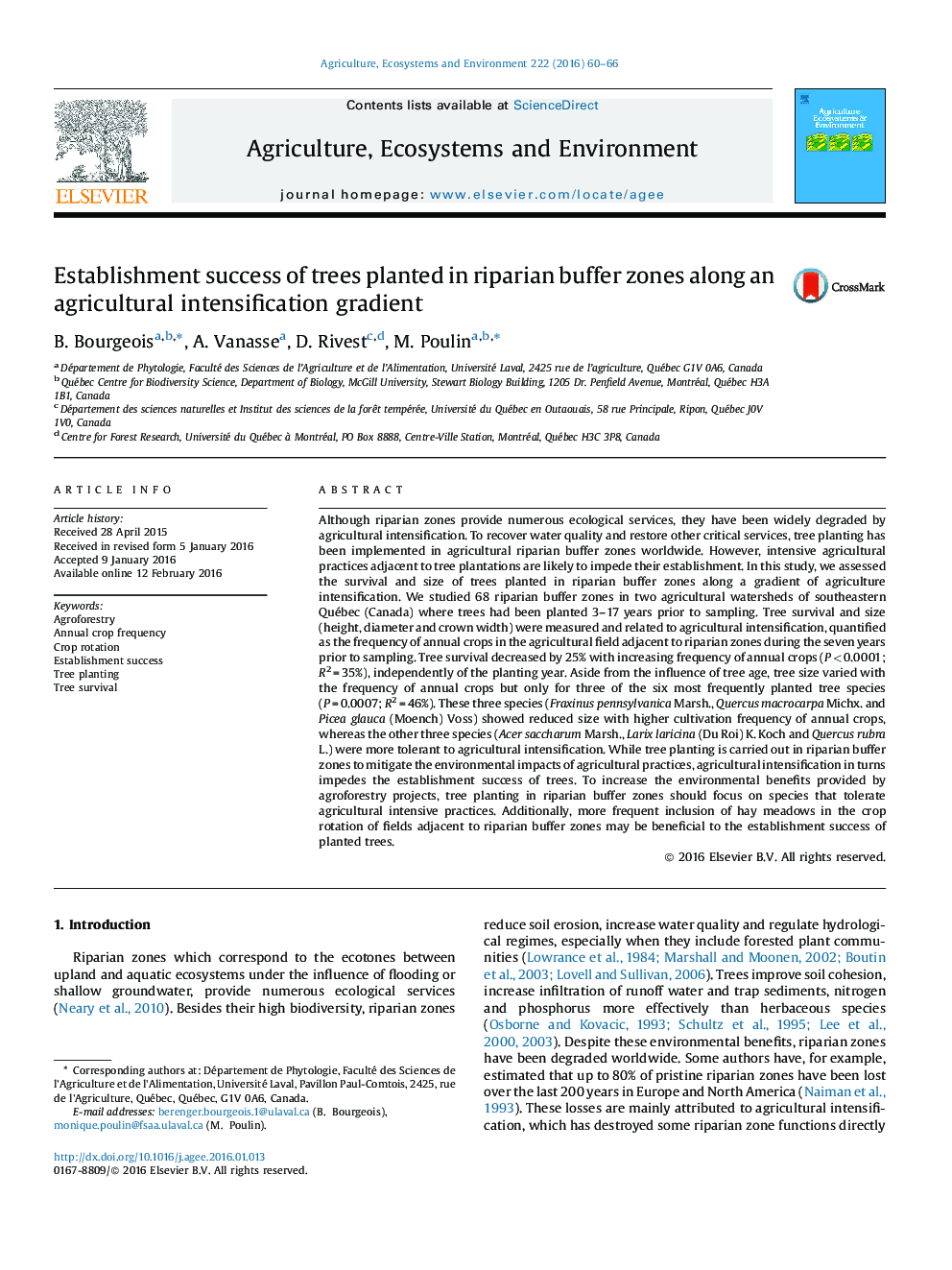| کد مقاله | کد نشریه | سال انتشار | مقاله انگلیسی | نسخه تمام متن |
|---|---|---|---|---|
| 2413579 | 1552030 | 2016 | 7 صفحه PDF | دانلود رایگان |
• Agricultural intensification affected trees planted in riparian buffer zones.
• Tree survival decreased by 25% with increased frequencies of annual crop cultivation.
• The response of tree growth to the frequency of annual crop was species-specific.
• Crop and tree management alternatives are encouraged to improve tree establishment.
Although riparian zones provide numerous ecological services, they have been widely degraded by agricultural intensification. To recover water quality and restore other critical services, tree planting has been implemented in agricultural riparian buffer zones worldwide. However, intensive agricultural practices adjacent to tree plantations are likely to impede their establishment. In this study, we assessed the survival and size of trees planted in riparian buffer zones along a gradient of agriculture intensification. We studied 68 riparian buffer zones in two agricultural watersheds of southeastern Québec (Canada) where trees had been planted 3–17 years prior to sampling. Tree survival and size (height, diameter and crown width) were measured and related to agricultural intensification, quantified as the frequency of annual crops in the agricultural field adjacent to riparian zones during the seven years prior to sampling. Tree survival decreased by 25% with increasing frequency of annual crops (P < 0.0001; R2 = 35%), independently of the planting year. Aside from the influence of tree age, tree size varied with the frequency of annual crops but only for three of the six most frequently planted tree species (P = 0.0007; R2 = 46%). These three species (Fraxinus pennsylvanica Marsh., Quercus macrocarpa Michx. and Picea glauca (Moench) Voss) showed reduced size with higher cultivation frequency of annual crops, whereas the other three species (Acer saccharum Marsh., Larix laricina (Du Roi) K. Koch and Quercus rubra L.) were more tolerant to agricultural intensification. While tree planting is carried out in riparian buffer zones to mitigate the environmental impacts of agricultural practices, agricultural intensification in turns impedes the establishment success of trees. To increase the environmental benefits provided by agroforestry projects, tree planting in riparian buffer zones should focus on species that tolerate agricultural intensive practices. Additionally, more frequent inclusion of hay meadows in the crop rotation of fields adjacent to riparian buffer zones may be beneficial to the establishment success of planted trees.
Journal: Agriculture, Ecosystems & Environment - Volume 222, 15 April 2016, Pages 60–66
